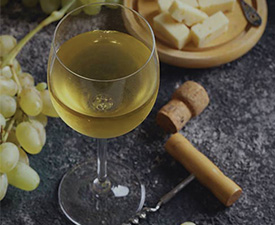Cava is the name of a style of Spanish white or pink sparkling wine, produced in different areas of Catalonia, Navarra, Rioja, Andalucia, Valencia and Extremadura but mainly in the Penedes region in Catalonia, 40 km to the south west of Barcelona.
Cava is a Greek term that was used to refer to a 'high end' table wine or wine cellar, and comes from the Latin word 'cava' which means cave in English. Caves were used in the early days of Cava production for the preservation or aging of wine. Today Cavas have become integrated with Spanish family traditions and is often consumed at baptism celebrations.
The sparkling wine of Cava was created in 1872 by Josep Raventos. The vineyards of Penedes were devastated by the phylloxera plague, and the predominantly red vines were being replaced by large numbers of vines producing white grapes. After seeing the success of the Champagne region, Raventos decided to create the dry sparkling wine that has become the reason for the region's continued success. In the past the wine was referred to as 'Spanish Champagne' (no longer permitted under EU law), or colloquially as 'champana' or 'xampany'.
Cava is produced in varying levels of dryness: brut nature, brut (extra dry), seco (dry), semi-seco (medium) and dulce (sweet). Under Spanish Denominacion de Origen laws, Cava can be produced in six wine regions and must be made according to the Traditional Method with second fermentation in the bottle and uses a selection of the grapes Macabeo, Parellada, Xarel-lo, Chardonnay and Pinot Noir. Despite being a traditional Champagne grape, Chardonnay was not used in the production of Cava until the 1980s.
Cava is not the only sparkling wine made in Spain and sometimes consumers are fooled into accepting something inferior. You can distinguish cava by the cork, which should be marked with a four-pointed star. Remember that the sweeter the cava, the cooler it needs to be served: a brut nature can be served at approx 10-12C, but a semi-seco should be well chilled 6C.











